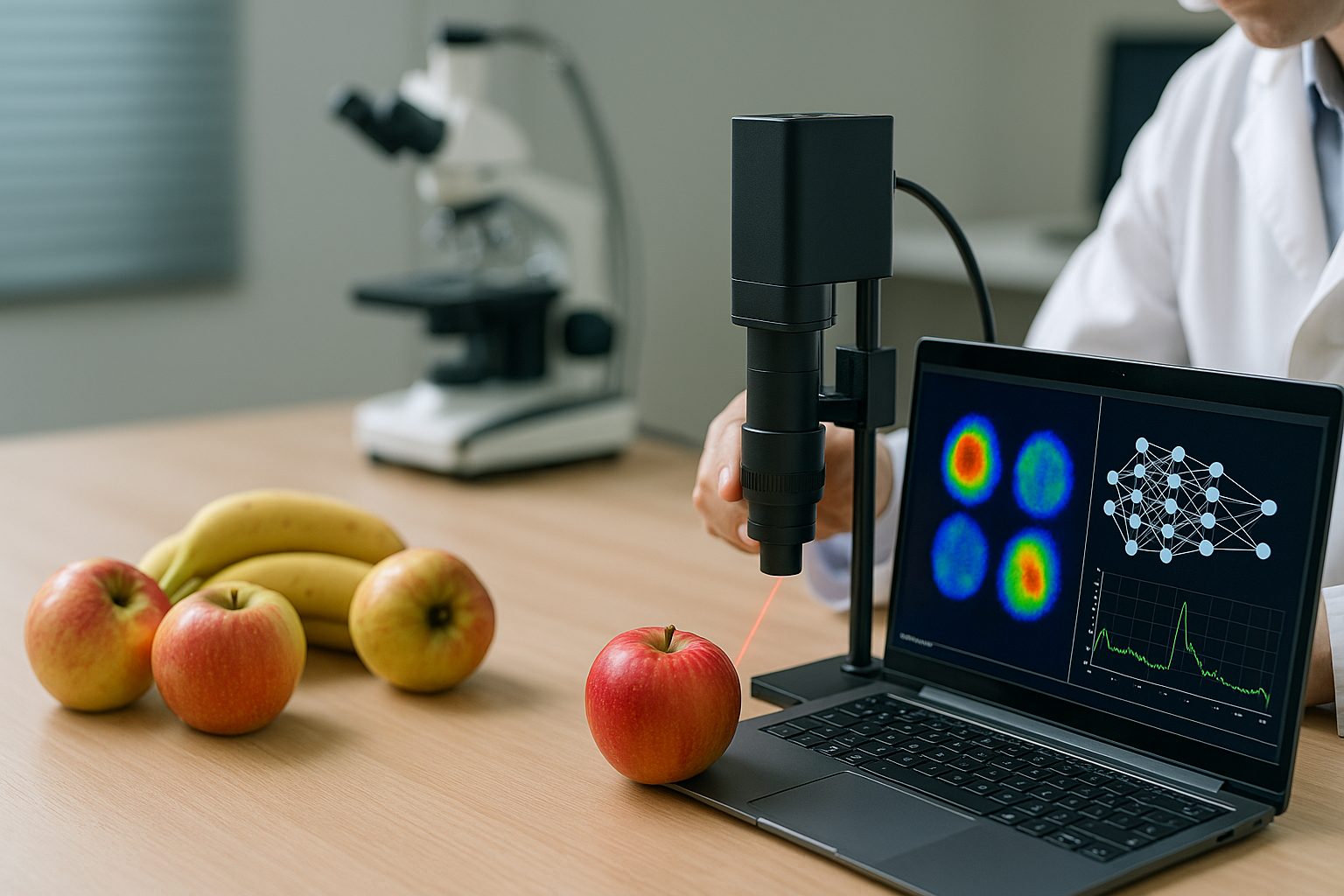Food safety gets AI upgrade with spectral data fusion
The study contextualizes the urgent need for advanced food quality technologies. With global food demand projected to grow by up to 56% by 2050, the risks associated with foodborne diseases, fraud, and nutritional degradation are mounting. Low- and middle-income countries bear the brunt, facing economic losses exceeding USD 100 million annually due to food-related illnesses.

In a significant scientific advance that may redefine food quality control, researchers have unveiled a powerful integration of deep learning and spectroscopic technologies to inspect food with greater speed, accuracy, and reliability than ever before.
The findings are published in a study titled “Deep Learning-Enhanced Spectroscopic Technologies for Food Quality Assessment: Convergence and Emerging Frontiers” in the Foods journal (2025, Vol. 14). The paper evaluates six state-of-the-art spectroscopic techniques and explores how their integration with deep learning methods can lead to high-precision, real-time, and non-destructive food inspection systems across the farm-to-fork continuum.
What are the current challenges in food quality assurance?
The study contextualizes the urgent need for advanced food quality technologies. With global food demand projected to grow by up to 56% by 2050, the risks associated with foodborne diseases, fraud, and nutritional degradation are mounting. Low- and middle-income countries bear the brunt, facing economic losses exceeding USD 100 million annually due to food-related illnesses. Simultaneously, consumers are demanding higher standards of nutrition, transparency, and food safety, particularly as trends in health-conscious consumption gain momentum.
Traditional food quality inspection methods, while scientifically validated, are often destructive, time-consuming, and unsuitable for real-time applications. Regulatory gaps persist in many nations, and complex food matrices challenge existing detection protocols. Moreover, the increasing incidence of sophisticated food fraud, such as ingredient substitution and mislabeling of geographic origin, underscores the inadequacy of conventional analytical approaches.
These challenges demand innovations that can offer both speed and precision without compromising accuracy. Spectroscopic technologies, which analyze the interaction between matter and electromagnetic radiation, have emerged as powerful tools due to their non-invasive nature and ability to detect a wide range of food properties. However, their effectiveness is often limited by complex spectral data, noise interference, and the inability to process large datasets in real time.
How do deep learning models enhance spectroscopic techniques?
To address these limitations, the authors conduct a systematic review of six leading spectroscopic and imaging technologies, near-infrared (NIR), mid-infrared (MIR), Raman, fluorescence, hyperspectral imaging (HSI), terahertz (THz) spectroscopy, and nuclear magnetic resonance (NMR), focusing on their convergence with deep learning techniques.
Each technology has specific strengths. NIR and MIR spectroscopy are effective for molecular fingerprinting and detecting nutritional elements. Raman spectroscopy excels at identifying structural compounds, while fluorescence spectroscopy captures biochemical signals tied to freshness and spoilage. Hyperspectral imaging provides spatial and spectral information simultaneously, making it ideal for identifying surface and internal defects. Terahertz spectroscopy and NMR contribute to non-contact, high-resolution insights, particularly for solid-state and moisture-rich samples.
Despite these advances, spectral analysis is hampered by overlapping signals, high-dimensional data, and environmental noise. Here, deep learning plays a transformative role. Algorithms such as convolutional neural networks (CNNs), long short-term memory (LSTM), and autoencoders can perform feature extraction, pattern recognition, and data fusion with unprecedented accuracy.
The integration of deep learning allows for the automation of spectral data processing, improving both speed and robustness. In applications such as freshness prediction, microbial contamination detection, and nutritional profiling, deep learning models outperform traditional chemometric methods. They reduce manual preprocessing requirements, support real-time classification, and can be embedded into portable devices for field deployment.
Importantly, the study highlights emerging trends in spectral–heterogeneous fusion, where data from multiple spectroscopic sources are combined using hybrid deep learning architectures. This multi-modal approach enhances prediction accuracy and expands the analytical capabilities of food inspection systems.
What are the future directions and implications for the food industry?
Going ahead, the research identifies three critical directions for the advancement of AI-enhanced food quality inspection. First is the development of multi-modal spectroscopic integration, where data from different technologies are synergized to provide a holistic view of food quality attributes. This strategy not only improves diagnostic precision but also enables adaptive learning from complex datasets.
Second is the implementation of edge computing in portable devices, allowing AI models to process data locally on embedded chips. This innovation is crucial for real-time applications in agriculture, supply chain monitoring, and point-of-sale testing, reducing reliance on cloud infrastructure and ensuring data privacy.
Third is the expansion of AI-driven application ecosystems. This includes deploying intelligent food grading systems, contamination alerts, and blockchain-compatible traceability platforms. These solutions can transform food supply chains by enhancing transparency, reducing inspection costs, and minimizing food waste through precise shelf-life estimation.
The paper calls for cross-disciplinary collaboration between AI developers, spectroscopists, food scientists, and regulatory bodies. Building standardized datasets, creating interpretable AI models, and developing user-friendly interfaces are essential steps to accelerate adoption. In the long term, these technologies may serve as a cornerstone for sustainable food systems, capable of addressing both nutritional security and consumer safety.
- READ MORE ON:
- AI in food quality assessment
- deep learning food inspection
- spectroscopic technologies in food analysis
- food safety and artificial intelligence
- food quality assurance AI
- machine learning food safety
- how AI improves spectroscopic food inspection
- deep learning applications in food safety
- FIRST PUBLISHED IN:
- Devdiscourse










